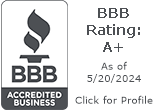

Remodeling Services
Licensed and Insured
Discounts for Veterans
Realty Services Offered

What is a High Performance Home?
The construction industry has traditionally been slow to embrace change. Long-standing rules of thumb and conventional wisdom often dominate the process. This cautious approach makes sense given the high stakes involved in construction—buildings are significant investments with serious health and safety considerations. Why take risks with something new when we can stick to the proven methods?
However, in the past decade or so, a few key developments have challenged the idea of simply sticking to the “old way.” First, the field of building science—the study of how buildings function and how heat, air, and moisture interact with their components—has matured significantly. This body of science now shows that the traditional approach not only wastes energy but also creates questionable indoor air quality and comfort for building occupants. It also highlights a safer, more practical path forward—high-performance building—which offers superior efficiency, health, comfort, and durability.
High-performance building is a subset of green building, but it centers exclusively on the energy efficiency of structures. It’s not about design elements like bamboo floors or green roofs. Several green building certifications are dedicated to this focus:
Airtight construction regulates the flow of heat and moisture into and out of the building envelope. Thermal bridge-free assemblies eliminate penetrations in the envelope that would otherwise compromise energy efficiency, comfort, and durability. Continuous insulation ensures that heat stays where it’s needed. High-quality windows and doors minimize heat loss while maximizing daylight and passive solar energy. Shading elements protect the building from unwanted passive solar heat gain. Meanwhile, a balanced heat recovery (or energy recovery) ventilation system brings in a steady supply of filtered fresh air, while recovering thermal energy from exhaust air to keep it within the building.
This envelope-first approach significantly lowers the energy required to heat and cool high-performance buildings. In fact, Passive House buildings typically reduce heating and cooling energy usage by 90%.
Visit Us
2421 Winchester Rd
NE Huntsville, AL
35811


Share On: